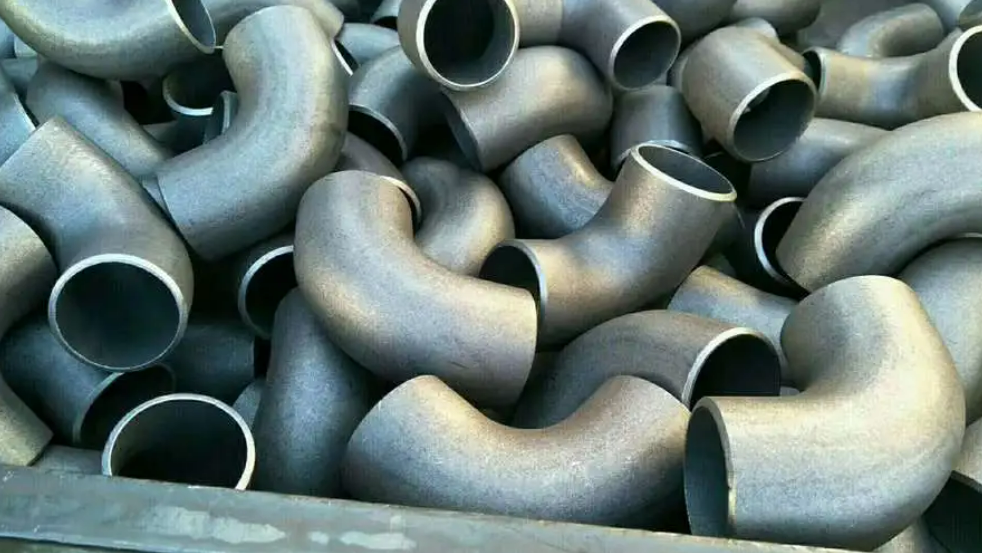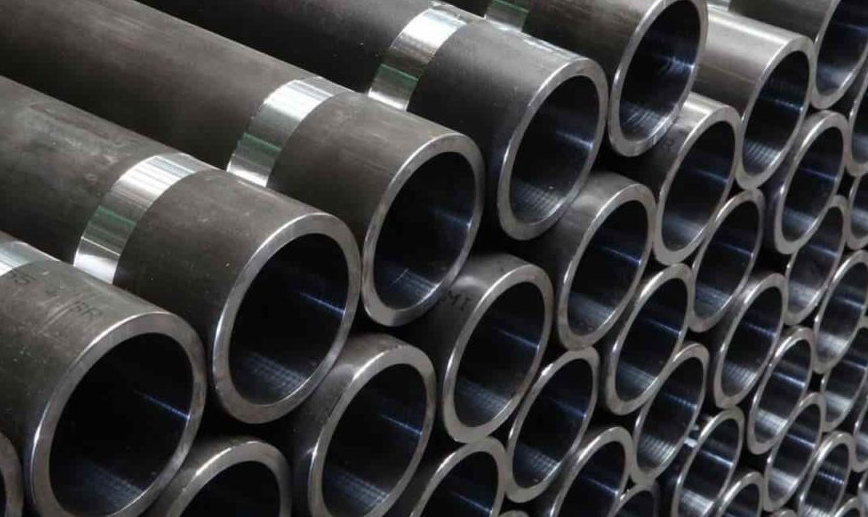Have you ever been curious about the high piles of steel on construction sites, or the steel used in the manufacturing process of vehicles, trains, ships, and other transportation tools? These seemingly identical steels actually have vast differences in composition, properties, and uses. Today, we will delve into the differences between alloy steel and carbon steel.

What is alloy steel?
Alloy steel is a type of steel that is alloyed with various elements such as silicon, chromium, molybdenum, boron, vanadium, nickel, aluminum, and more. These alloying elements enhance the strength, toughness, hardness, and wear resistance of the steel. Some alloying elements and their effects are as follows:
-
- Cobalt: Increases hardness and improves wear resistance and toughness.
- Manganese: Enhances surface hardness, impact resistance, and resistance to deformation.
- Chromium: Improves toughness and wear resistance while increasing hardness.
- Molybdenum: Boosts heat resistance and impact resistance while enhancing strength.
- Nickel: Enhances strength and toughness while improving corrosion resistance.
- Vanadium: Boosts strength, toughness, and corrosion resistance.
- Tungsten: Increases strength and toughness while enhancing corrosion resistance.
- Chromium-Vanadium: Significantly increases tensile strength, making the alloy strong but easy to bend and cut.
Types of Alloy Steel
Alloy steel is a combination of steel and certain elements to obtain unique characteristics and properties. Depending on the weight of the elements that make up the alloy steel, there are two types, ranging from 1% to 50%. Two alloy steels will be mentioned below.
-
- High alloy steel: It contains a high proportion of alloying elements. The most common type of high alloy steel is stainless steel, which has a high chromium content of up to 12%. Chromium forms a thin oxide layer on the exterior of the steel, known as the passivation layer. The high amount of chromium provides long-term corrosion protection. This alloy is slightly more expensive than low-alloy steel. Therefore, it is mainly used in automotive and industrial equipment.
- Low alloy steel: It has a low percentage of alloying elements, ranging from 1% to 5%. Depending on the alloy used, this steel has different strengths and applications. In addition, large-diameter flanges use this alloy to obtain specific mechanical properties. Therefore, low alloy steel can be used in various projects in many industries, such as stud export production and seamless rolling ring forgings.
Applications of Alloy Steel
Alloy steel is used in many industrial sectors and contributes to the manufacture of hundreds of products. Their extremely high strength, hardness, toughness, and machinability make them the most demanding materials in many industries. Therefore, alloy steel is an ideal choice for structural components, automotive, mining, machinery, railway, and many other industries.
What is carbon steel?
Carbon steel is a common steel. In simple terms, carbon steel is an alloy of iron and carbon. As the name suggests, compared to stainless steel, carbon steel has a higher carbon content, lower melting point, and higher durability. Carbon steel is the most important group of engineering alloys, and depending on the process, they account for the majority of steel applications.
Types of Carbon Steel
Carbon steel is classified and sorted based on its carbon content. Then, let’s take a look at some types of carbon steel and their desired characteristics for specific applications.
-
- Low-carbon steel: It is the most common and widely used form of carbon steel. It has a carbon content of less than 0.25%. Low-carbon steel is usually weaker and softer, and it is easy to weld and deform, which makes it suitable for low-cost mechanical processing and welding.
- Medium carbon steel: It has a carbon content of 0.25% to 0.6% and a manganese content of 0.6% to 1.65%. These metals’ mechanical properties can be improved through heat treatment. Medium carbon steel is stronger than low carbon steel but has lower ductility and toughness.
- High carbon steel: This type of carbon steel is the hardest and has high wear resistance but with low ductility. It is always processed through quenching and tempering. Additionally, their carbon and manganese content ranges are 0.6-1.25% and 0.3-0.9% respectively.
Applications of Carbon Steel
Due to its high versatility, carbon steel has a wide range of applications and is widely used in various industries, especially in the petrochemical and oil and gas fields.
What are the differences between alloy steel and carbon steel?
These two types of steel, alloy steel and carbon steel, may look similar in appearance but their chemical properties are quite different. However, these characteristics make them unique and provide industries with reasons to use them and benefit from them. We have compiled some differences between alloy steel and carbon steel to help you better understand these two types of steel.

-
- Application areas
Alloy steel is used in various industries for the manufacture of beams, structural profiles, aircraft parts, ship propellers, bars, guide rails, rods, screws, bolts, nails, and wires. On the other hand, carbon steel is also popular in many manufacturing industries for the production of automotive body parts, food cans, wheels, crankshafts, gears, mechanical parts, pipes, cutting tools, springs, molds, construction, and bridge components. - Composition
Alloy steel contains a high proportion of alloying elements other than iron and carbon. Given the high carbon content and low percentage of other elements in carbon alloys. - Corrosion resistance
Compared to carbon steel, alloy steel is a good corrosion-resistant material. The alloying elements in alloy steel make it more resistant to corrosion and also improve its machinability. - Hardness
The high carbon content in carbon steel makes it harder. Compared to carbon steel, the hardness of the alloy is lower. - Strength
Carbon steel is excellent in terms of strength. Alloy steel also has good strength, but it is lower than carbon steel. - Toughness
The high carbon content in carbon steel makes it more ductile. Conversely, alloy steel with different alloying elements in addition to carbon has poor toughness. - Ductility
The various alloying elements in alloy steel reduce its ductility. However, the carbon element in carbon steel increases its ductility. - Weldability
Carbon steel has higher weldability compared to alloy steel. This is due to the reduced content of alloying elements (excluding carbon) in iron. If the steel contains elements such as boron, magnesium, and silicon, welding becomes more complex. - Price
Alloy steel is a very expensive type of steel compared to carbon steel. The price of carbon steel varies depending on the carbon content. The higher the carbon content, the higher the price.
- Application areas
Conclusion
Thank you for reading our article and we hope it can help you to have a better understanding of the differences between alloy steel and carbon steel. If you want to find more information about alloy steel and carbon steel, we’d advise you to visit Huaxia Steel for more information.
As a leading supplier of alloy steel and carbon steel across the world, Huxia Steel offers a wide range of high-quality products such as alloy steel, tool steel, carbon steel, stainless steel wire, sheets, strips, and stainless steel plates for global markets.







